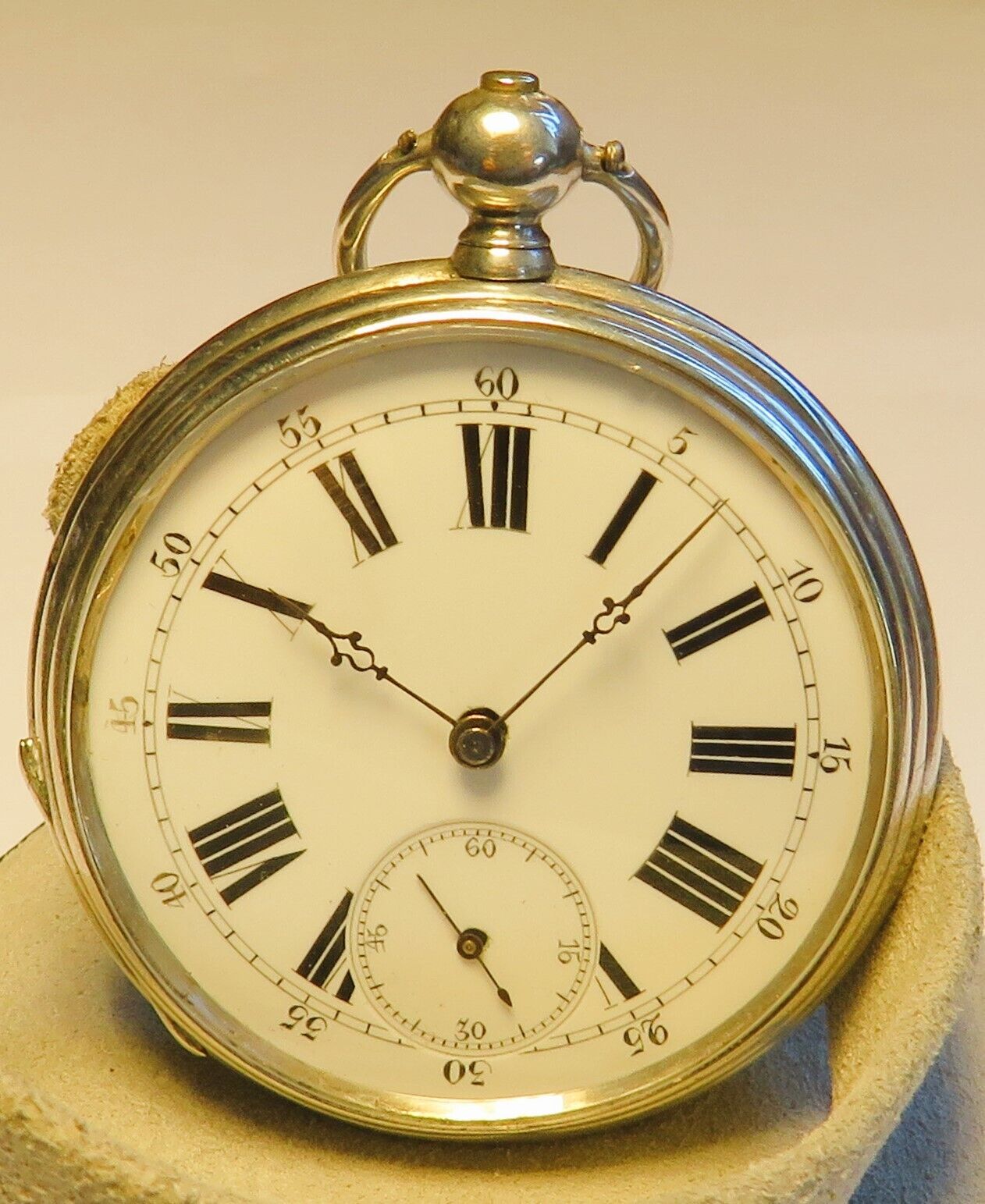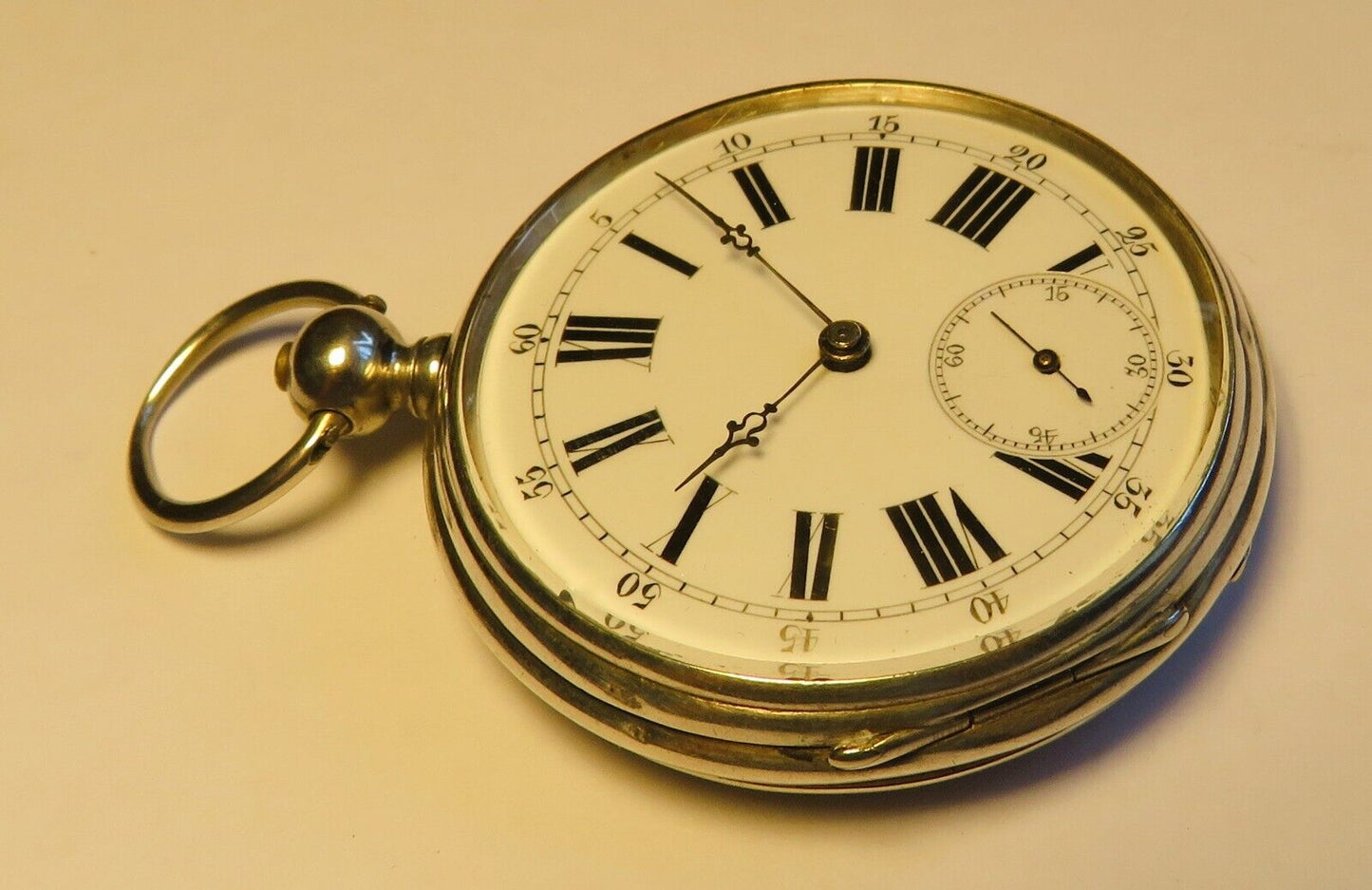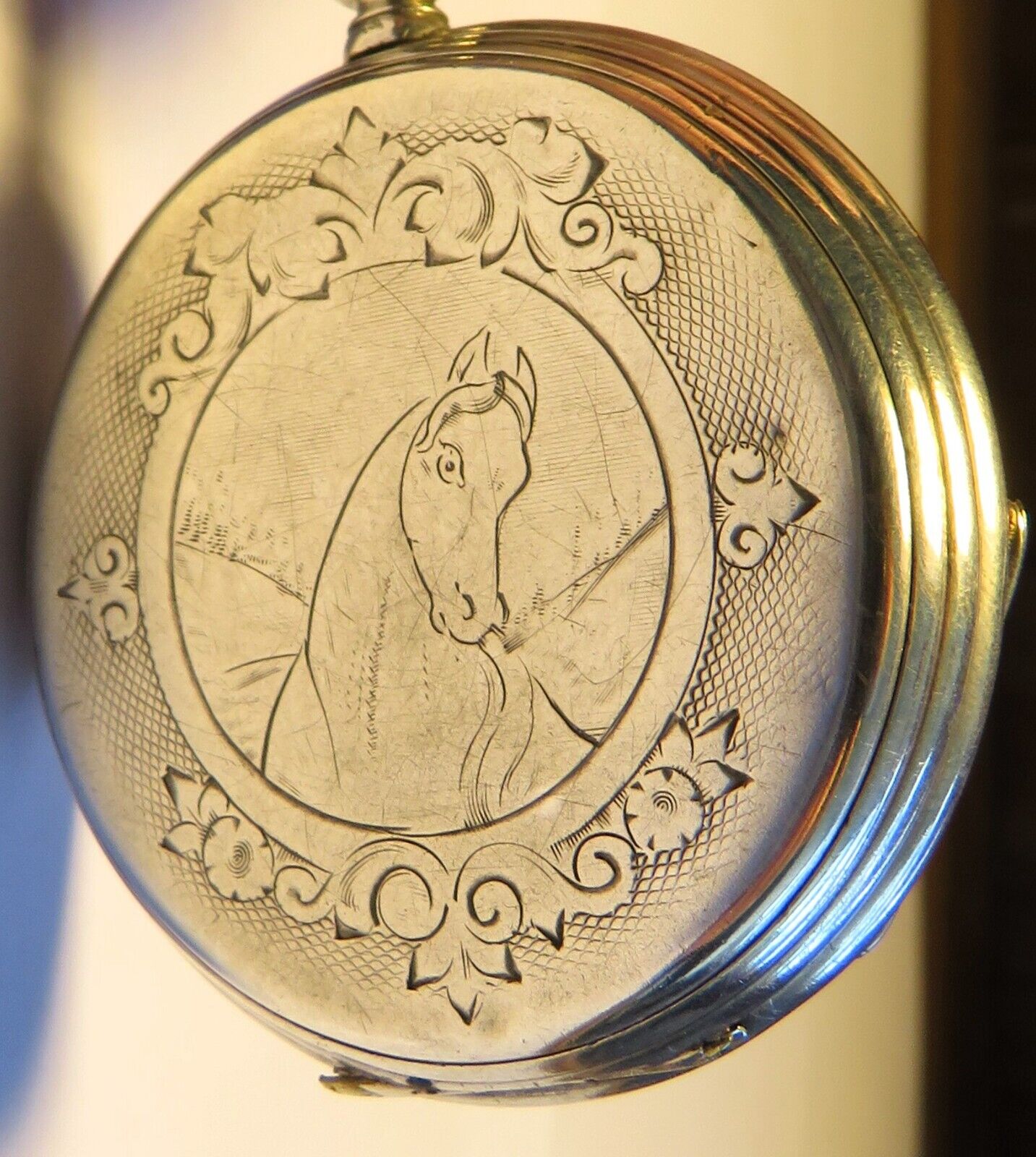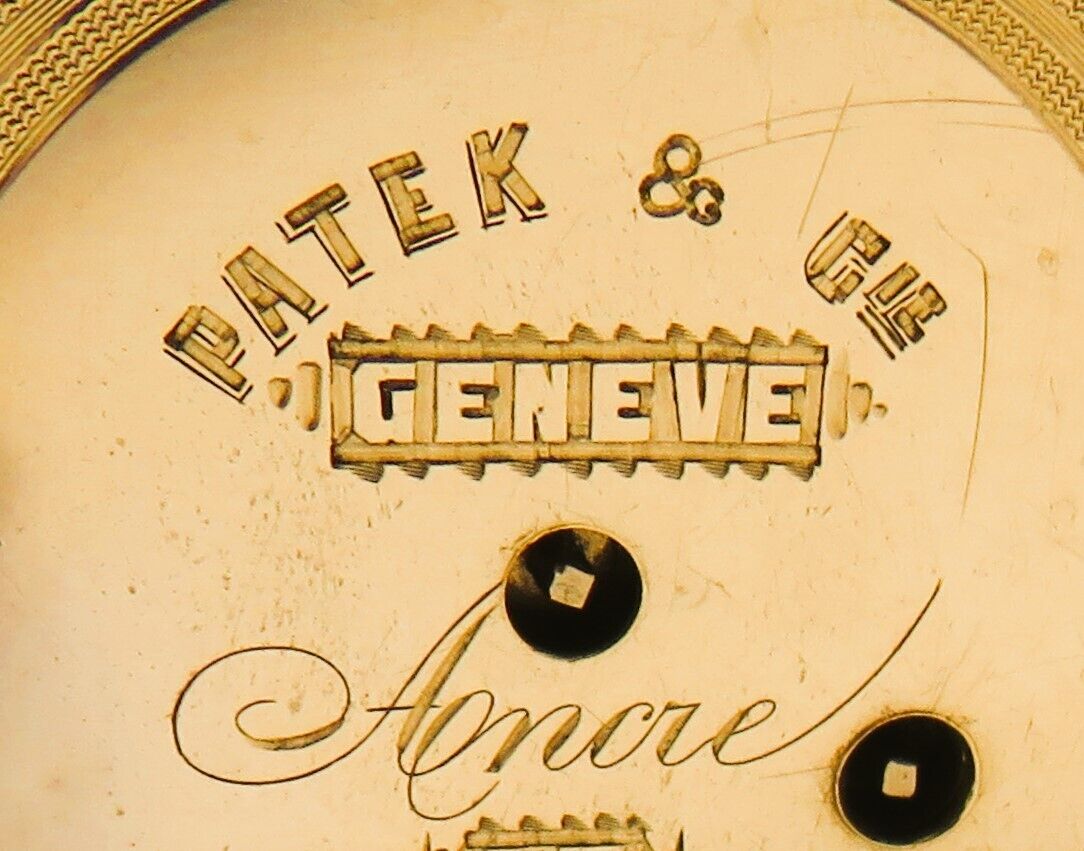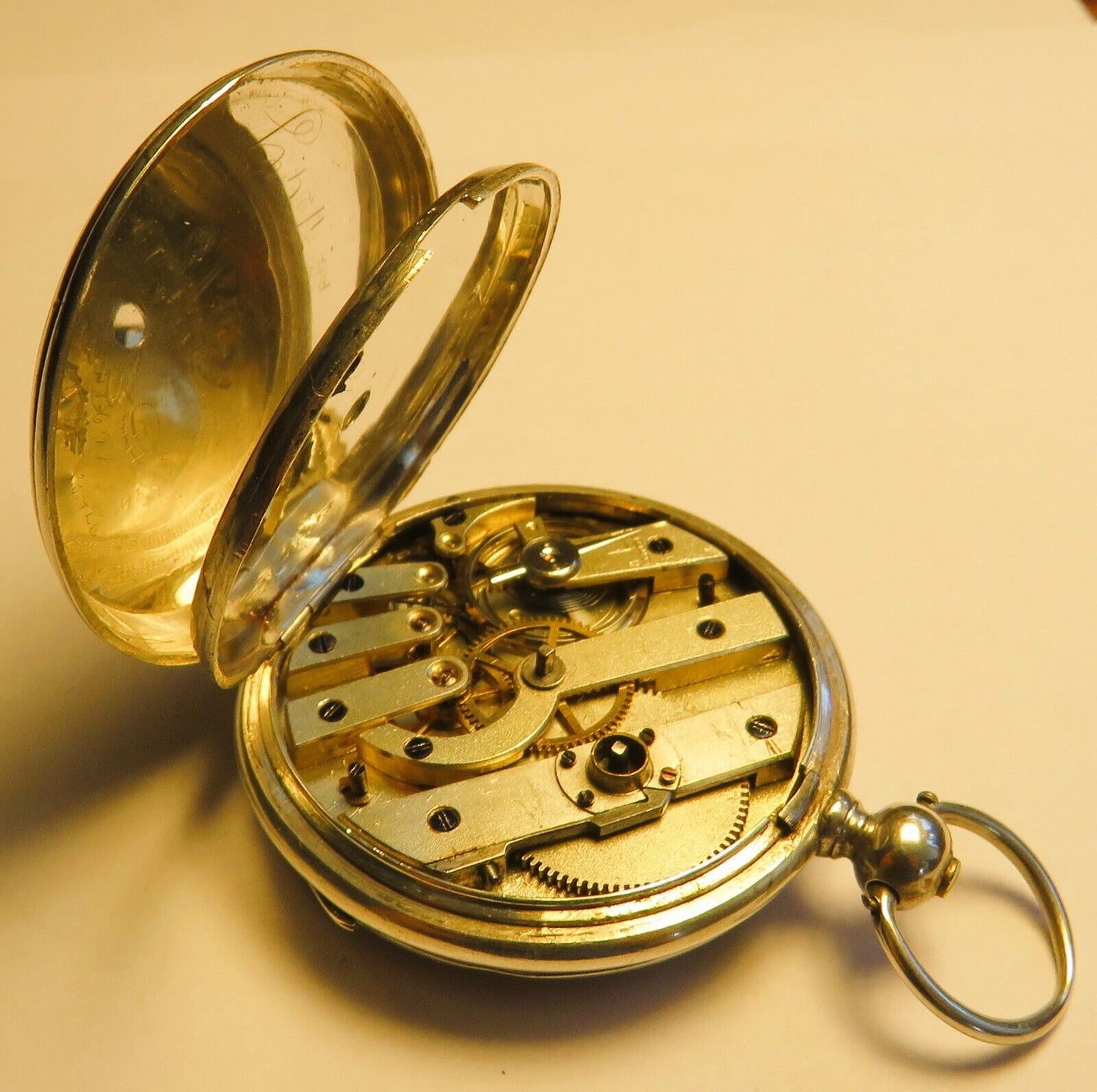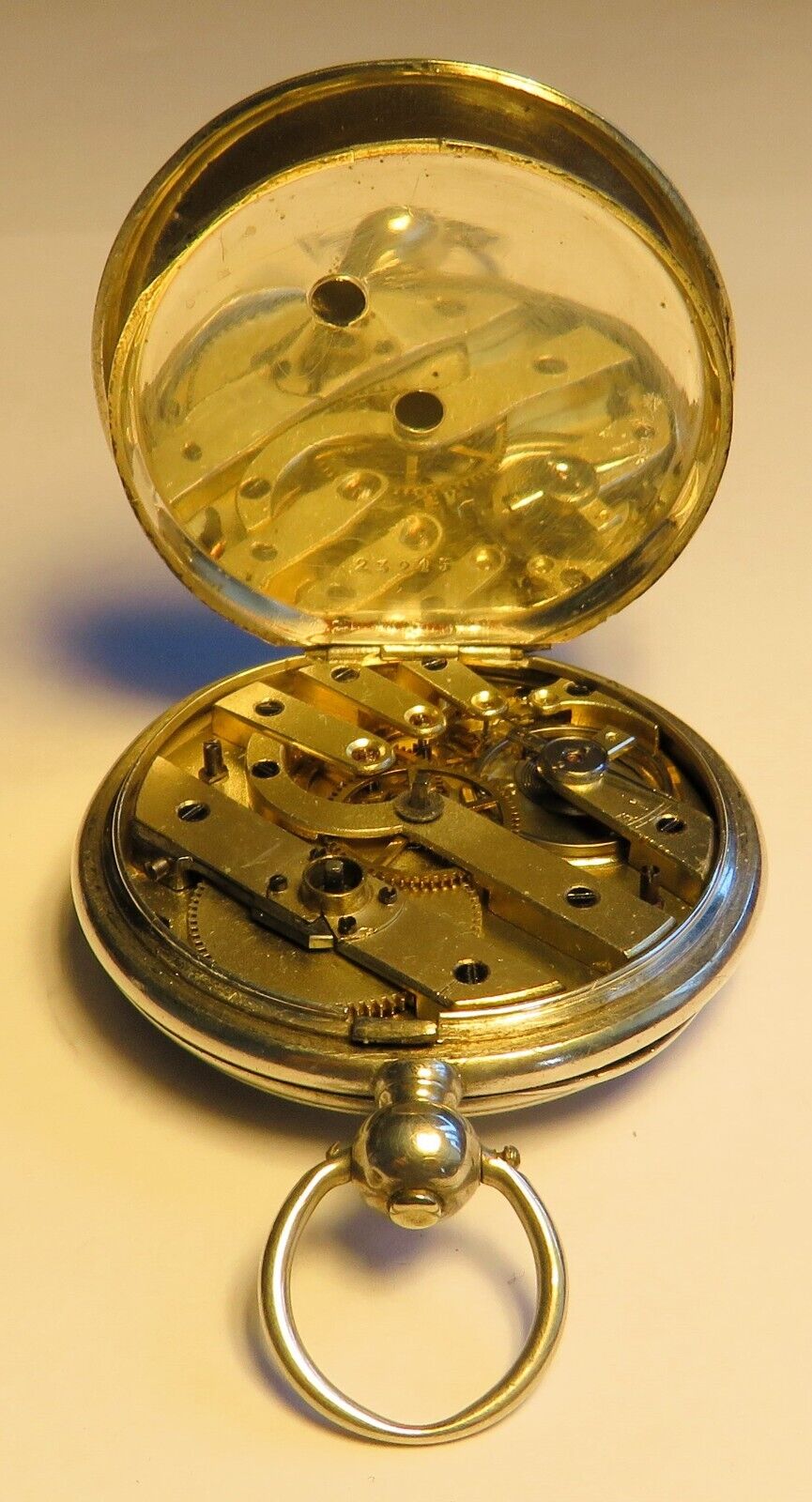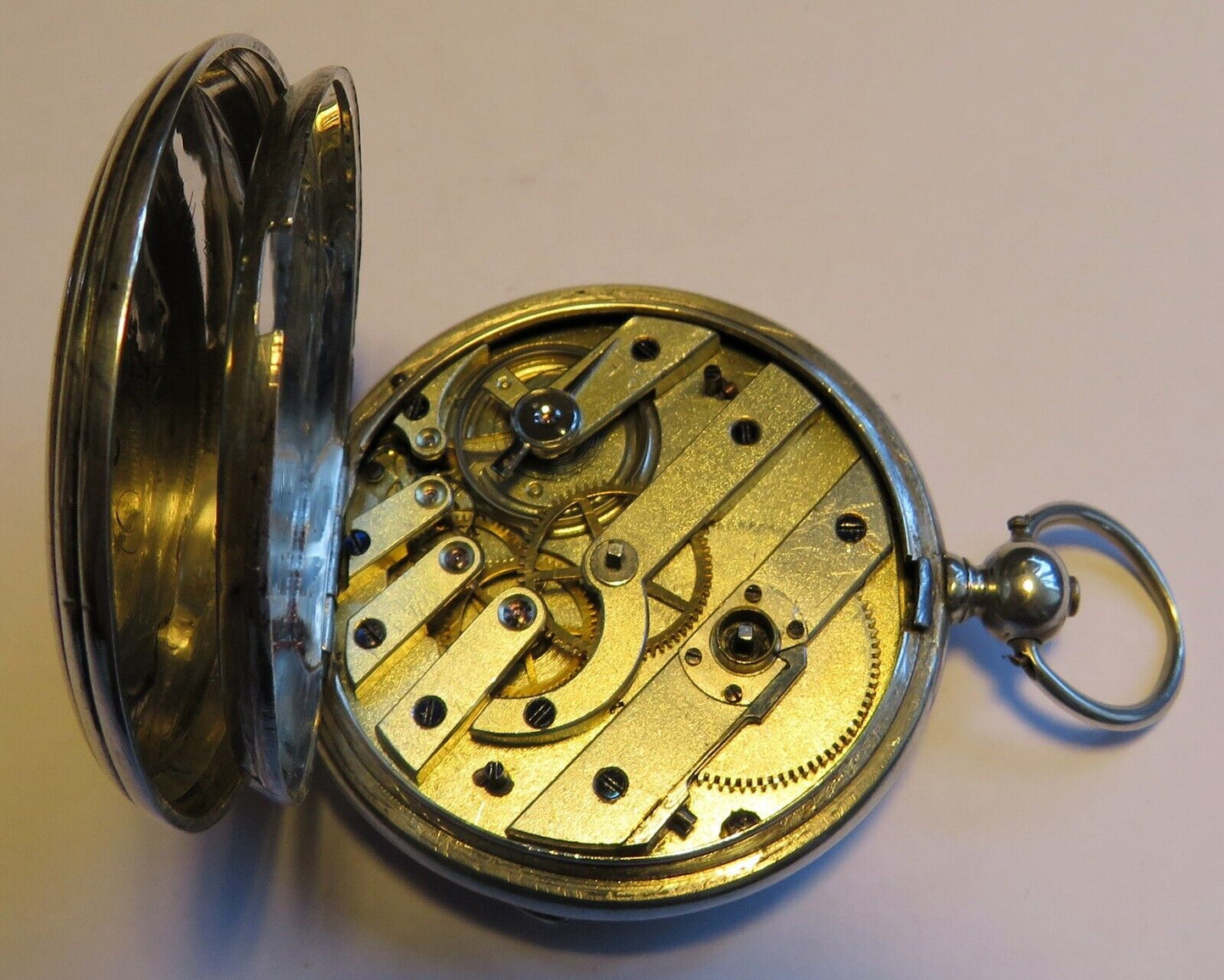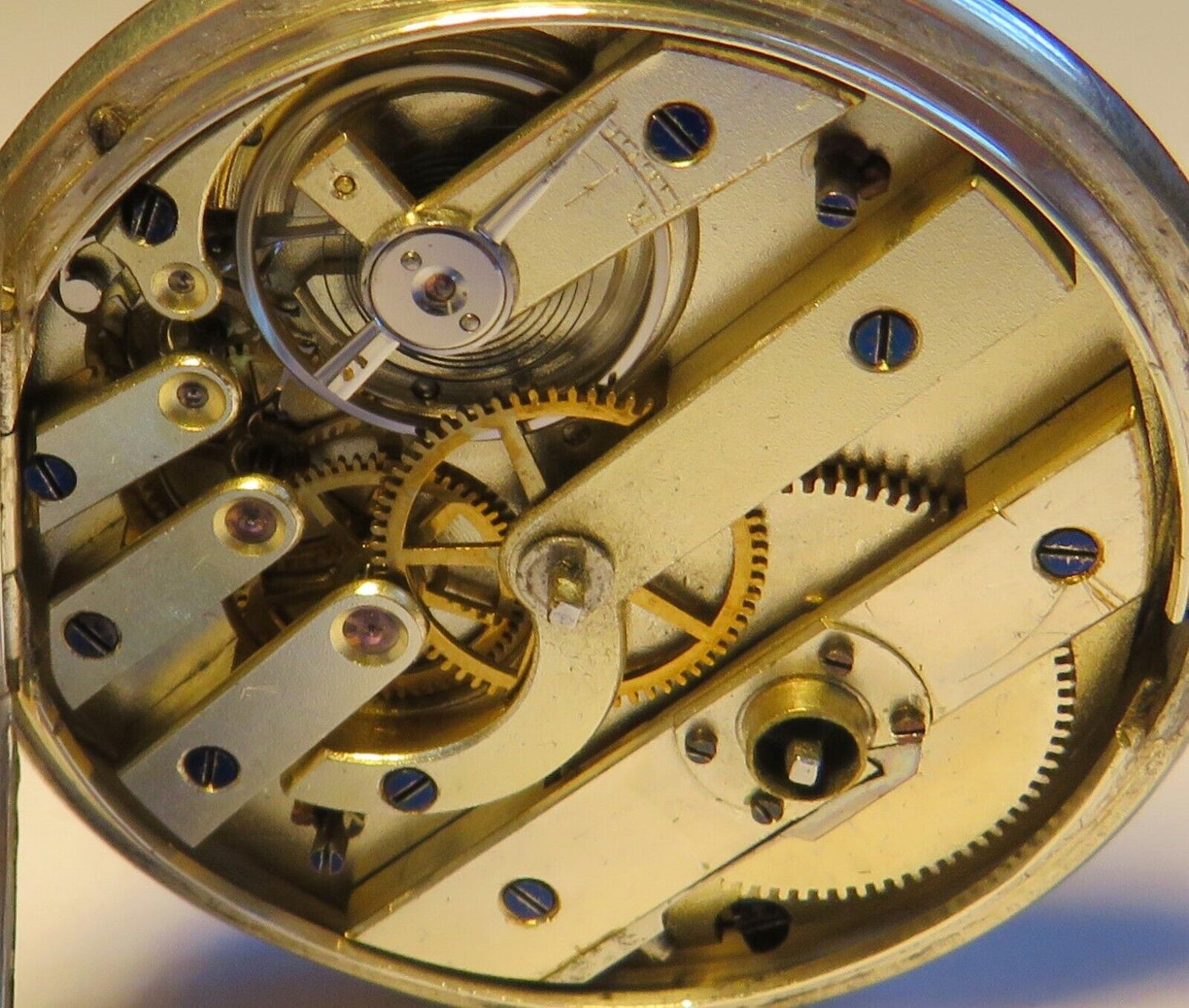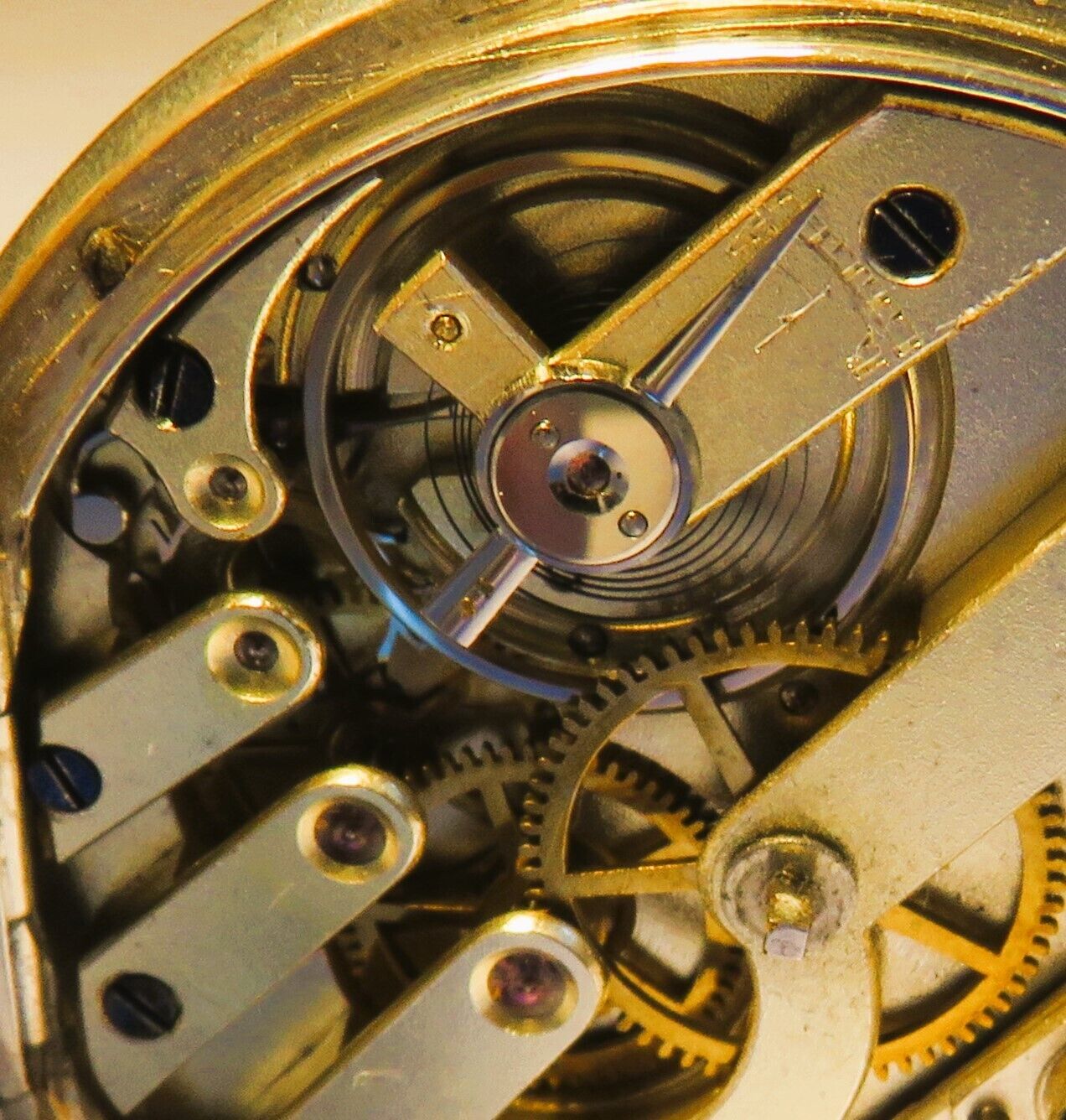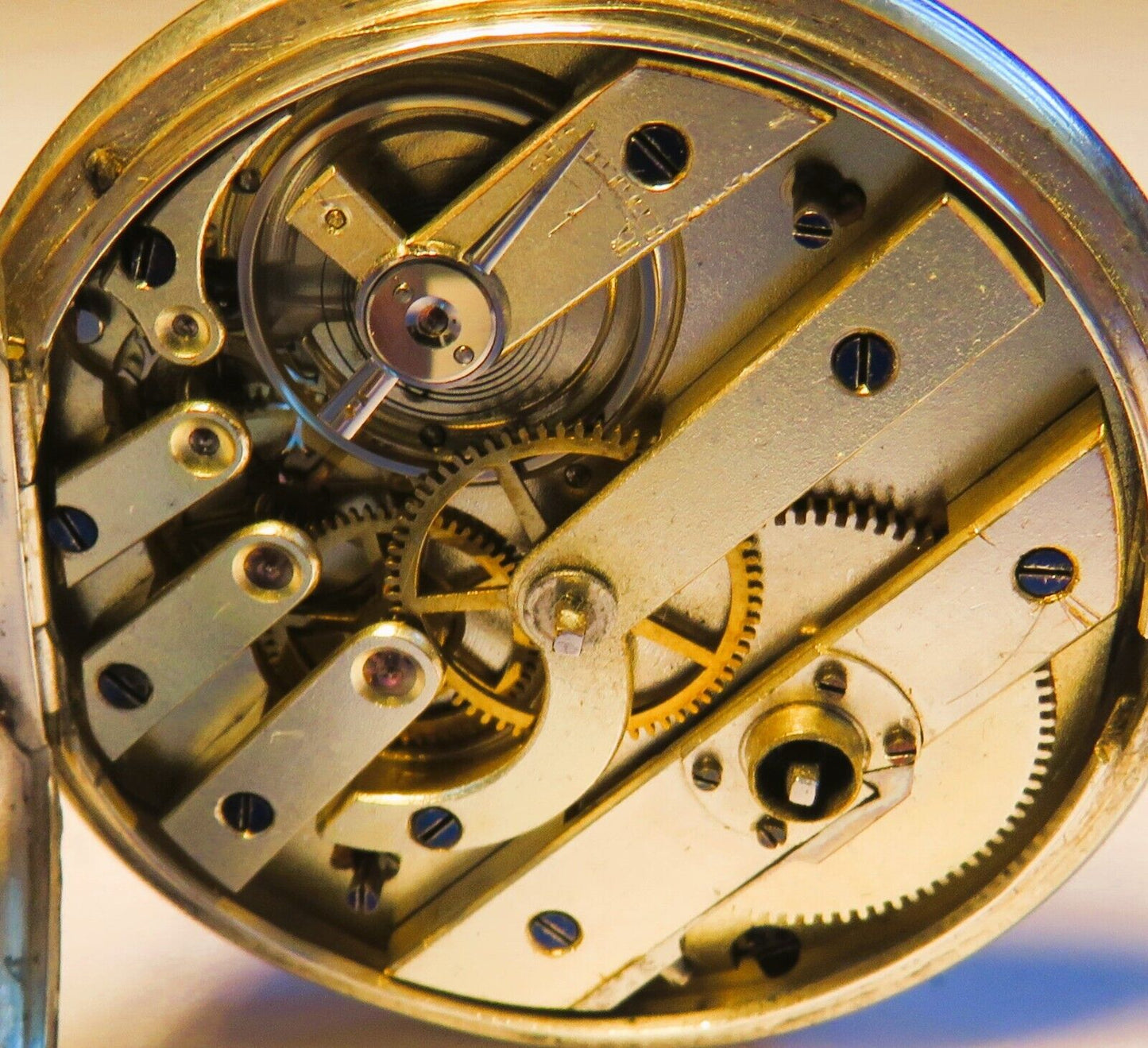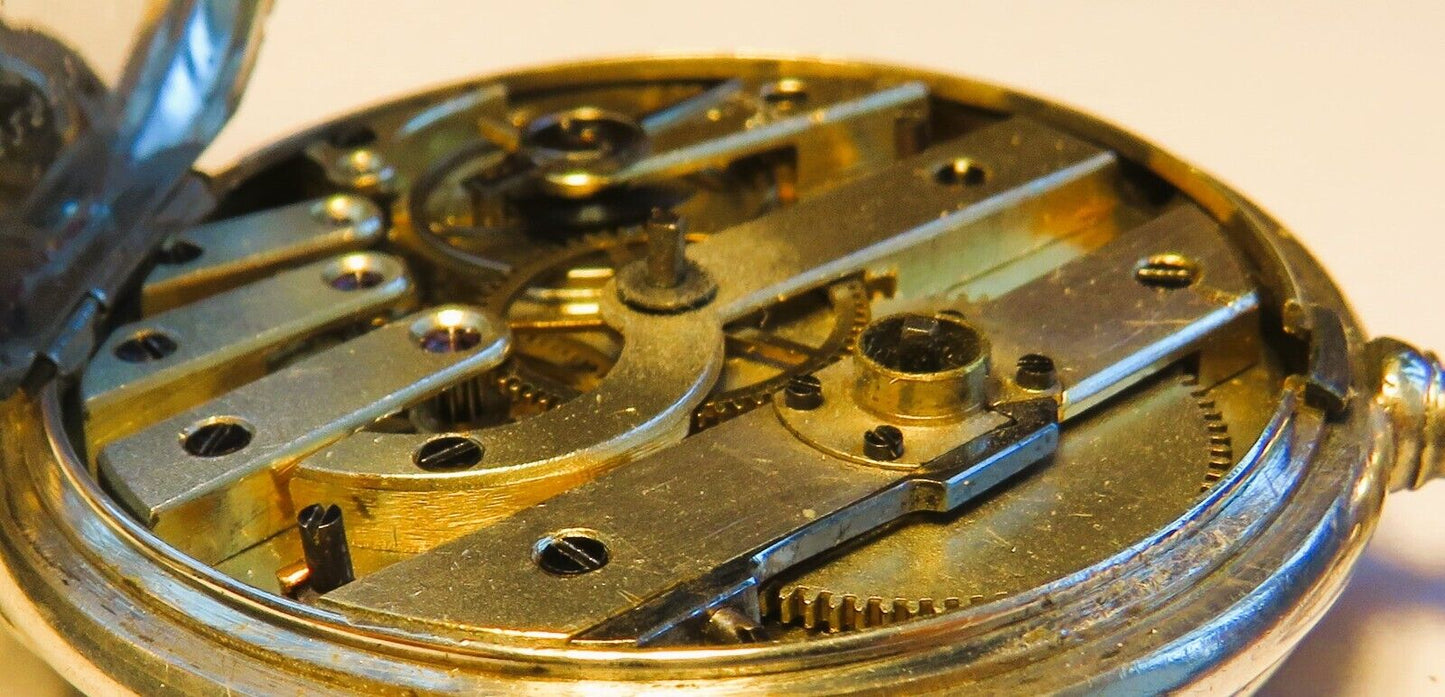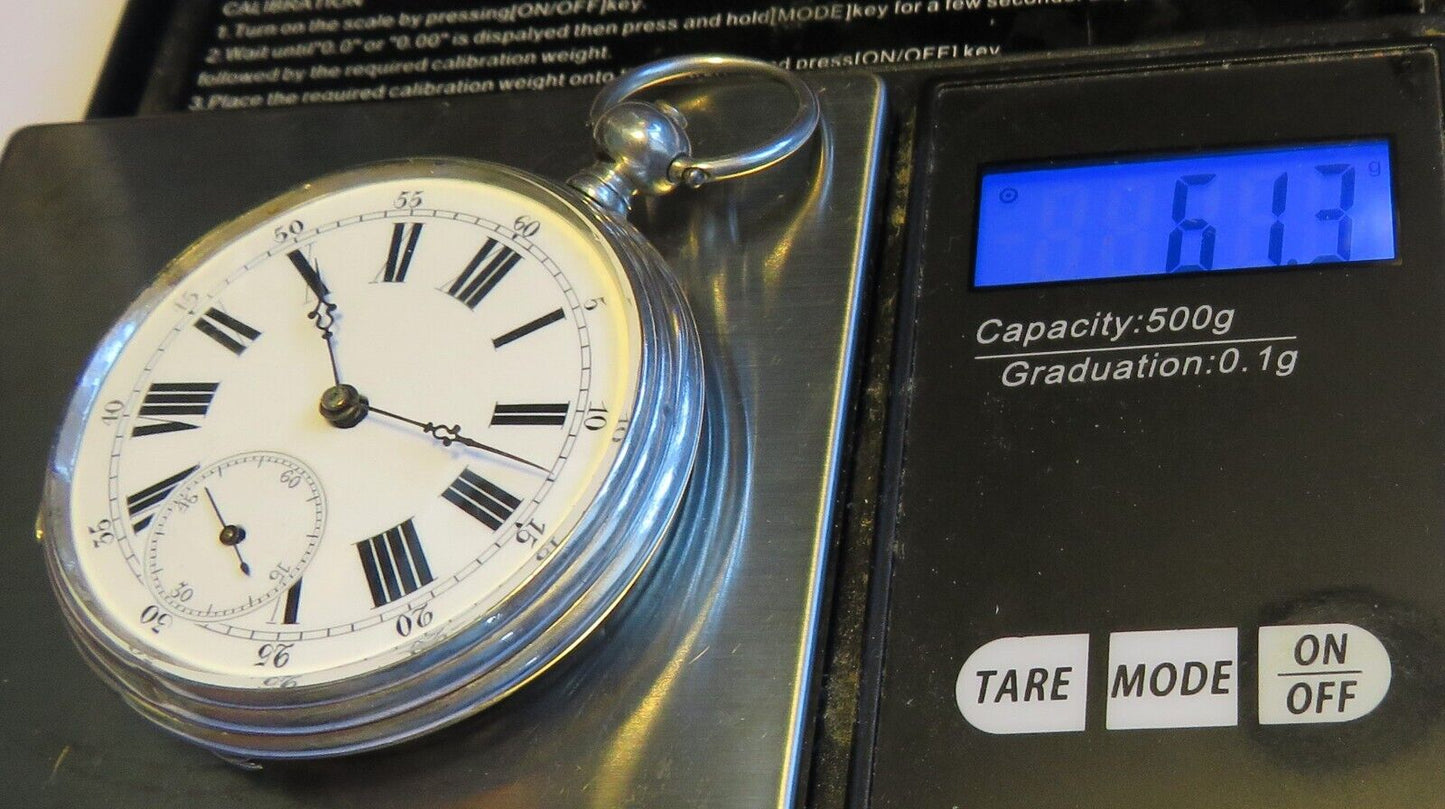Patek Philippe
Patek Philippe & Co Cie Geneve Lepine solid silver pocket watch ca. 1860
Patek Philippe & Co Cie Geneve Lepine solid silver pocket watch ca. 1860
Couldn't load pickup availability
Super rare original Patek & Cie Philippe men's pocket watch, antique, made of solid silver, circa 1908 - works and runs!
Patek Philippe is the best and therefore most valuable watch manufacturer in the world, whose complicated pocket watches regularly achieve seven-figure hammer prices at specialist auctions
Description:
Patek Philippe & Co. silver pocket watch Lepine circa 1860, absolutely original and authentic
Smooth case with artfully handcrafted horse engraving / motif on the back, inner lid signed "Patek & Cie", case diameter: 45mm
Rare Roman numerals, which date back to the time of its creation, small second, artistically hand-forged hands typical of early Patek pocket watches from around 1850, early bridge movement with anchor escapement around 1860, intact
Interestingly—and this makes this artifact almost unique—the numerals are Roman, but the surrounding railway minute track has Arabic numerals. The dial is in absolutely excellent condition.
The robust movement shows, in addition to the absolutely rare so-called "Moustache anchor" typical for Patek Philippe, the construction of early Patek movements with the centrally curved bridge, blued screws and the typical anchoring of the winding wheel
Inner and outer case number: 23215, movement number presumably hidden beneath the dial. It's perfectly normal and common for a Patek pocket watch from around 1850 to be unsigned on the dial, as the manufacture was less than 10 years old at the time, and no one knew the name Patek.
This magnificent artifact and early model from Patek Philippe starts and runs (accuracy not tested)
EZ: 2 - normal, age-related collector's condition! Normal to barely noticeable signs of age and wear, enamel dial unrestored in excellent condition, no chips or damage, tarnishes on and through
History of the watch manufacturer Patek & Co Geneve (Source: Watchwiki:
On May 1, 1839, the watch manufacturer Patek, Czapek & Co. was founded in Geneva by two Polish immigrants, the businessman and aristocrat Antoine Norbert Count de Patek and the watchmaker Francois Czapek. Due to differences between the two, however, the collaboration was discontinued. The latter continued to operate the company Czapek & Co. until 1869. Collaboration between Patek and Philippe
Patek chose the talented French watchmaker Jean-Adrien Philippe as his new partner after meeting him at the Paris World's Fair in 1844 and getting along well with him. Philippe had already enriched watchmaking history with one of its most revolutionary inventions: the crown winding mechanism. Since then, watches no longer required an additional key for winding; instead, both winding and setting the hands to the time were now performed using the far more practical crown.
On May 15, 1845, the company was renamed Patek & Co. after Jean-Adrien Philippe and Vincent Gostkowski joined the company. That same year, a patent was filed for a watch with a winding stem and hand-setting mechanism. Patek & Co. manufactured its first minute repeater.
On January 1, 1851, the name was changed from Patek & Co. to Patek Philippe & Co. In 1881, a patent for a precision fine adjustment device was filed by Philippe. Joint-stock company - and important inventions
On February 1, 1901, Patek Philippe became a public limited company and renamed Ancienne Manufacture d'Horlogerie Patek Philippe & Cie. SA. In 1902, a patent for a double chronograph was filed.
The company continued to attract attention with significant inventions. In 1925, the world's first wristwatch with a perpetual calendar was released, and in 1927, the first wrist chronographs were produced.
When the global economic crisis led to the need for a financially strong investor in 1931, brothers Charles and Jean Stern, whose dial factory had been a supplier to the company for some time, agreed to acquire a majority stake in the company. Since then, the Stern family's name has been synonymous with Patek Philippe. (Today, Philippe Stern, the third generation of the family, serves as president of the company. Thierry Stern, his son, represents the fourth generation as vice president.)
In 1932, the company introduced the Calatrava model, named after a knightly order founded in 1158 by Abbot Raimondo in the town of Calatrava. This model series has since become one of the manufacturer's classics. The Calatrava Cross, depicted on the crown, remains the trademark of the watches.
In 1937, Geneva watchmaker Louis Cottier developed the first "heure universelle" wristwatches for Patek Philippe. The dials of these world time watches allowed the time to be read simultaneously in all 24 time zones.
In the early 1940s, series production of chronographs and wristwatches with perpetual calendars began. In the following years, Patek Philippe movements won numerous precision competitions at the Geneva Observatory.
In 1962, the world's first wristwatch with a perpetual calendar and automatic winding was introduced.
In 1966, Jean Daniel Rubeli, head of the development department, designed the Ellipse model. He considered the golden ratio in the shape of the round case. The mysterious shimmering blue of the dial was achieved by chemically treating the gold.
In 1976, the Nautilus model, designed by Gérald Genta, was launched. A distinctive feature of this watch was its porthole-shaped bezel, which, pressed onto the monocoque case with two side screws, ensured water resistance to 120 meters. Since 1977, Patek has been producing the thinnest automatic movement, Caliber 240, with a thickness of just 2.40 mm.
Today, at a time of increasing concentration in the watch sector, Patek Philippe is one of the few remaining independent watch companies. The company is also the only Geneva-based manufacturer whose entire production of mechanical watch movements bears the Geneva Seal (Poinçon de Genève).
An offer from the sole proprietorship Reiner Haas, Managing Director is Reiner Haas
Our company is taxed according to the differential taxation method, no VAT is shown in the final price
Cancellation policy
Right of withdrawal
You have the right to withdraw from this contract within fourteen days without giving any reason.
The cancellation period shall expire after fourteen days from the day on which you, or a third party other than the carrier designated by you, takes possession of the goods. To exercise your right of cancellation, you must notify us of your decision to cancel this contract by means of an unambiguous declaration (e.g., a letter sent by post, fax, or email). You may use the sample cancellation form below, but this is not mandatory.
The revocation must be addressed to:
Reiner Haas sole proprietorship
Rennmühle 3A, 91126 Schwabach
To comply with the cancellation period, it is sufficient that you send the notification of the exercise of the right of cancellation before the expiry of the cancellation period.
Consequences of revocation
If you cancel this contract, we will refund all payments that we have received from you, including delivery costs (with the exception of additional costs resulting from your choice of a delivery method other than the cheapest standard delivery offered by us), immediately and at the latest within fourteen days from the day on which we received notification of your cancellation of this contract.
For this refund, we will use the same means of payment that you used for the original transaction, unless something else was expressly agreed with you; under no circumstances will you be charged any fees for this refund.
We may refuse repayment until we have received the goods back or until you have provided evidence that you have returned the goods, whichever is the earlier.
whichever is earlier.
You must return or hand over the goods to us immediately and in any event no later than fourteen days from the date on which you notify us of the cancellation of this contract.
The deadline is met if you send the goods before the expiry of the fourteen-day period. You will bear the direct cost of returning the goods.
You only have to pay for any loss of value of the goods if this loss of value is due to handling of the goods which is not necessary to check their quality, properties and functioning.
If you wish to withdraw from the contract, please fill out this text template and send it back to:
Reiner Haas sole proprietorship
Rennmühle 3A
91126 Schwabach
I/we hereby revoke the contract concluded by me/us for the purchase of the following goods:
…............................................................................................................…................................................................................................................................................................................................................
Ordered on …......................................................
Received on …..................................................
Name of the consumer(s)
…........................................................................................
Address of the consumer(s)
…........................................................................................................….................................................................................................…..........................................................................................................…...........................................................................................................................................
Date and signature of the consumer(s) (only if notification is made on paper)
.........................................................................................................
EU Commission platform for online dispute resolution: https://www.ec.europa.eu/consumers/odr
